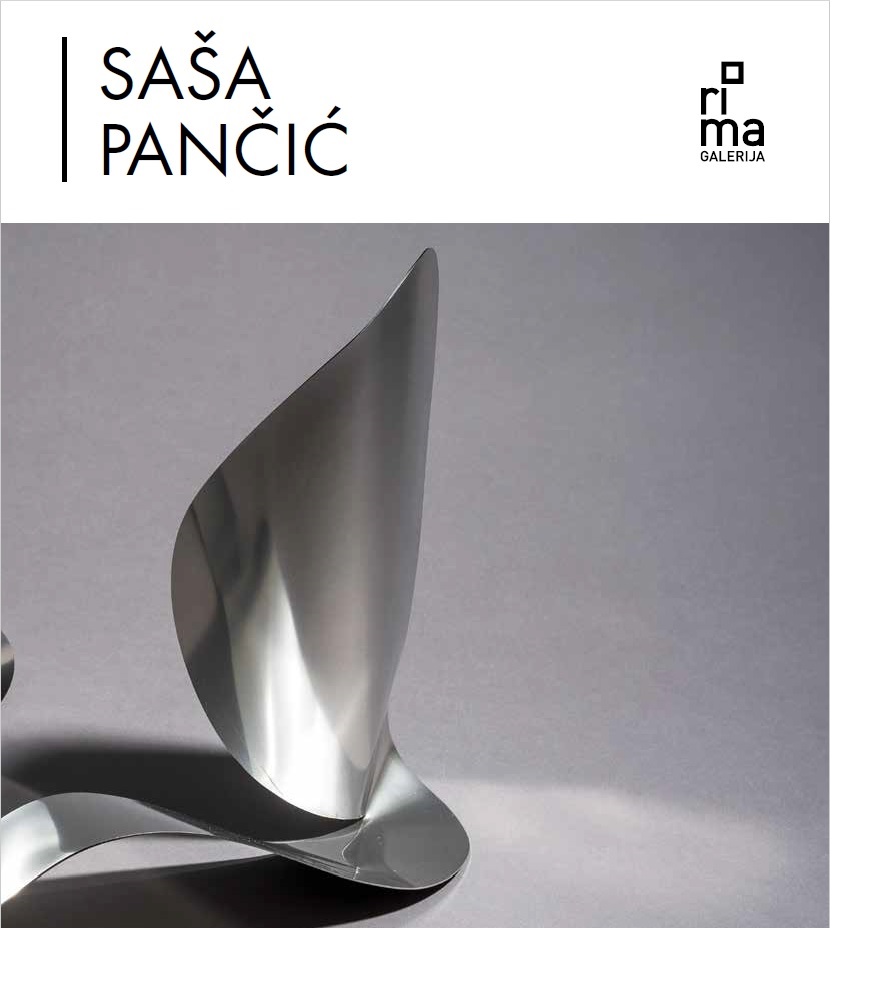 Jovana Stokic
Jovana Stokic
Kairos and the Unfolding of Time: A Phenomenological Exploration of Saša Pančić’s Art
I tend to see Saša Pančić’s latest exhibition as it unfolds as a meticulous exploration of kairos and phenomenology through the medium of abstract art, presenting a realm where time and perception intertwine and transform. Unlike the linear, sequential progression of chronos, Ancient Greek concept of time - kairos - emphasizes fleeting, opportune moments ripe with the potential for profound significance and change. This concept I interpret as a foundational pillar in Pančić’s artistic expression, inviting viewers to experience his works not as mere static entities but as vibrant, temporal phenomena engaging the senses and intellect in equal measure.
Within Pančić’s poetic language, kairos acts as a lens compelling us, the viewers, to observe the interplay between form, shadow, and light’s ephemeral qualities. His metal sculptures, particularly the "Ogled" series—named for notions of reflection, examination, and experimentation—materialize this aspect of kairos. Each piece, despite being crafted from cold, unyielding metal, paradoxically evokes fluidity and momentary grace, capturing the opportune moment’s essence where viewer engagement transforms the ordinary into the extraordinary.
This exhibition transcends visual encounters, embodying a phenomenological experience where emphasis lies on the body’s perception and interaction with art objects. Phenomenology, valuing direct experience and phenomena essence, mirrors Pančić’s intention to create art surpassing mere visual appreciation, invoking deeper, more visceral reactions. Works like "Art@fact" and "Senka 2" surpass their materiality, engaging viewers’ bodily presence, suggesting a dialogical exchange where art and observer merge in shared interpretation and meaning. Pančić’s profound engagement with time, materiality, and perception through kairos and phenomenology reveals the momentary existence essence, surpassing conventional time (chronos), and unveiling the present moment’s depth and potential. His exploration, enriched by historic avant-garde, minimalist, and post-minimalist insights, which I interpret via philosopher Maurice Merleau-Ponty’s reflections, evolves into a narrative that is both reflective and immersive. Merleau-Ponty, in his exploration of perception and embodiment, posits that our body and its sensory experiences are fundamentally intertwined with our consciousness and how we come to know the world. This perspective is crucial in comprehending the depth of Pančić’s engagement with the sensory and perceptual dimensions of art.
(complete text in the printed edition)